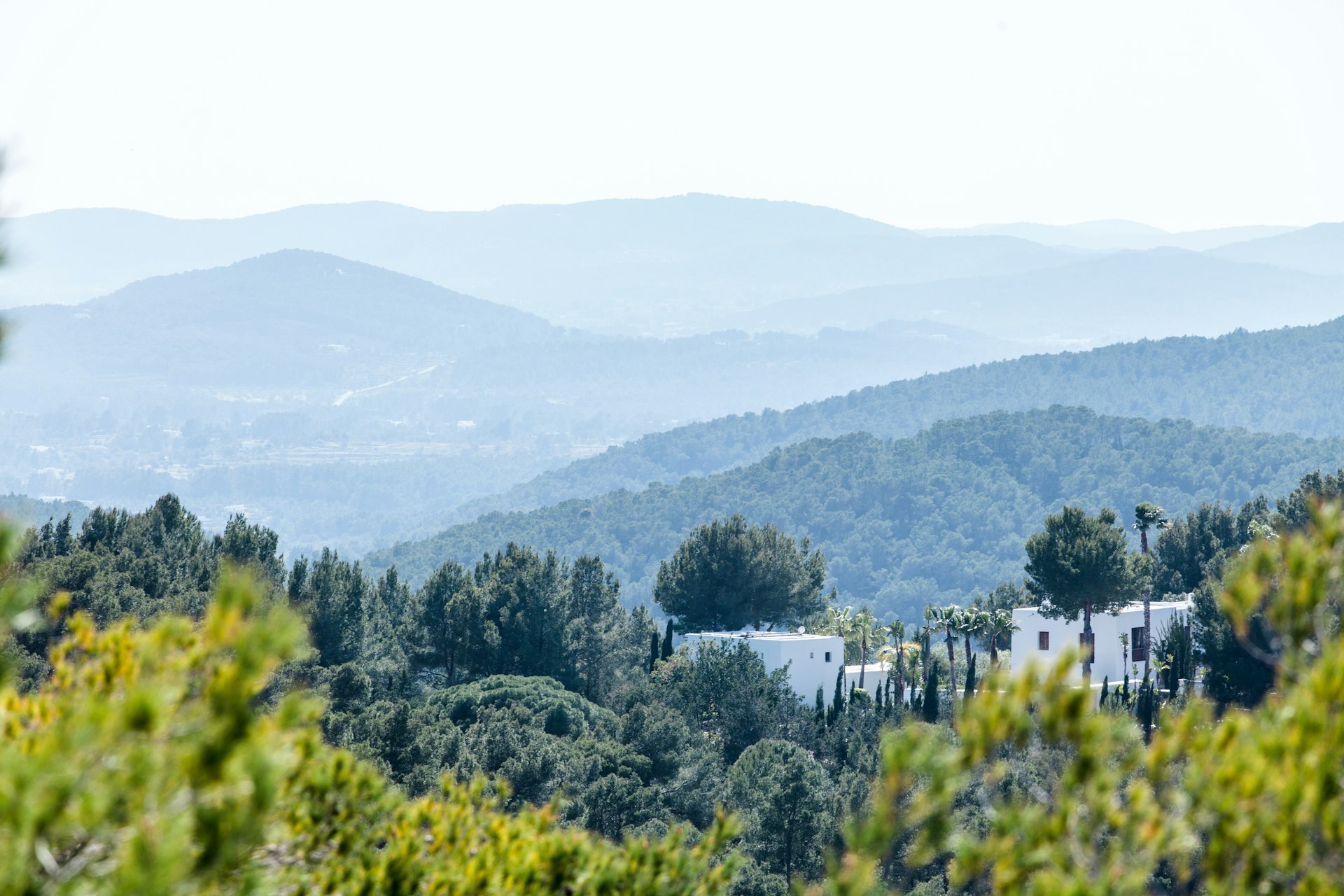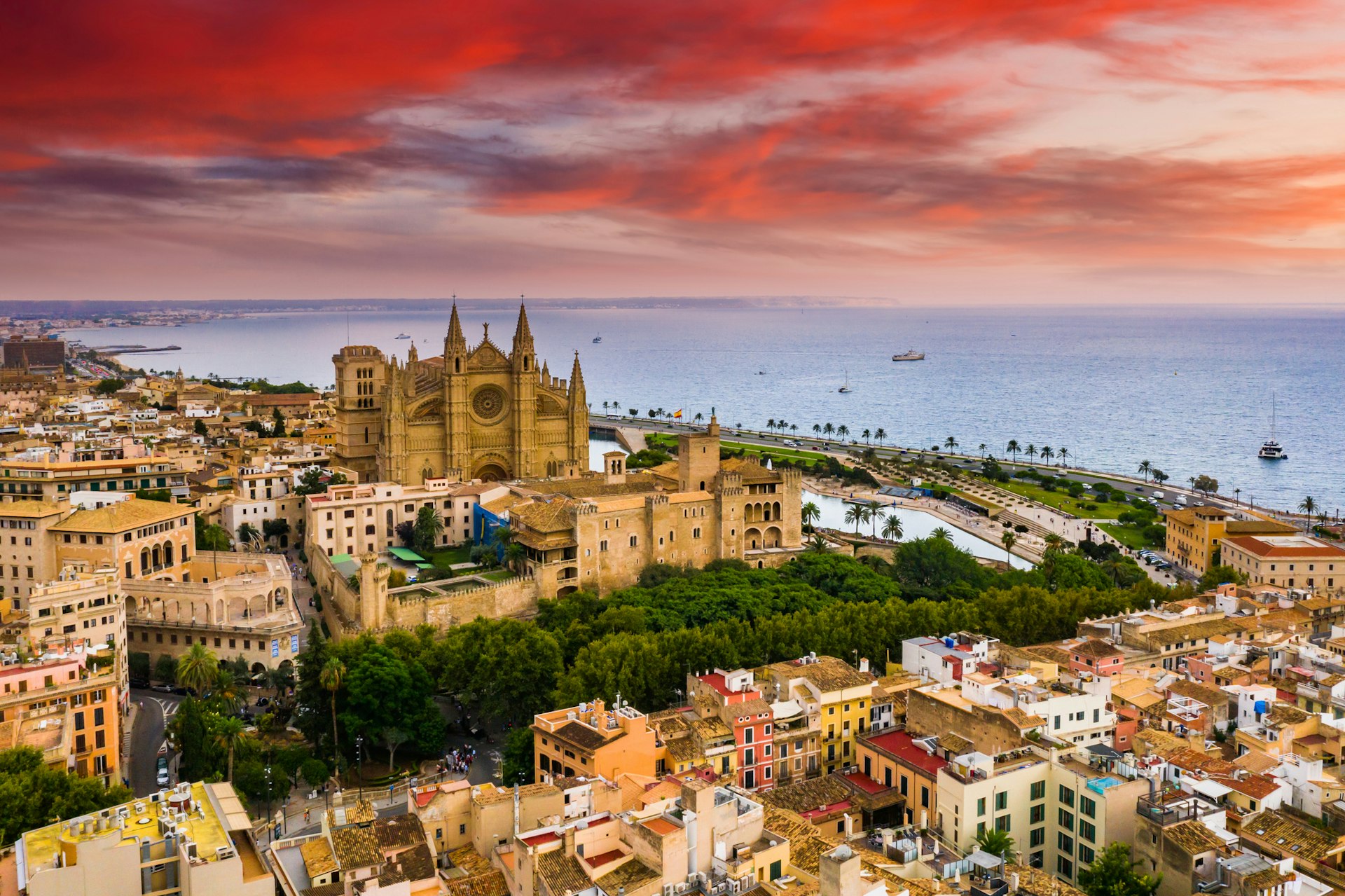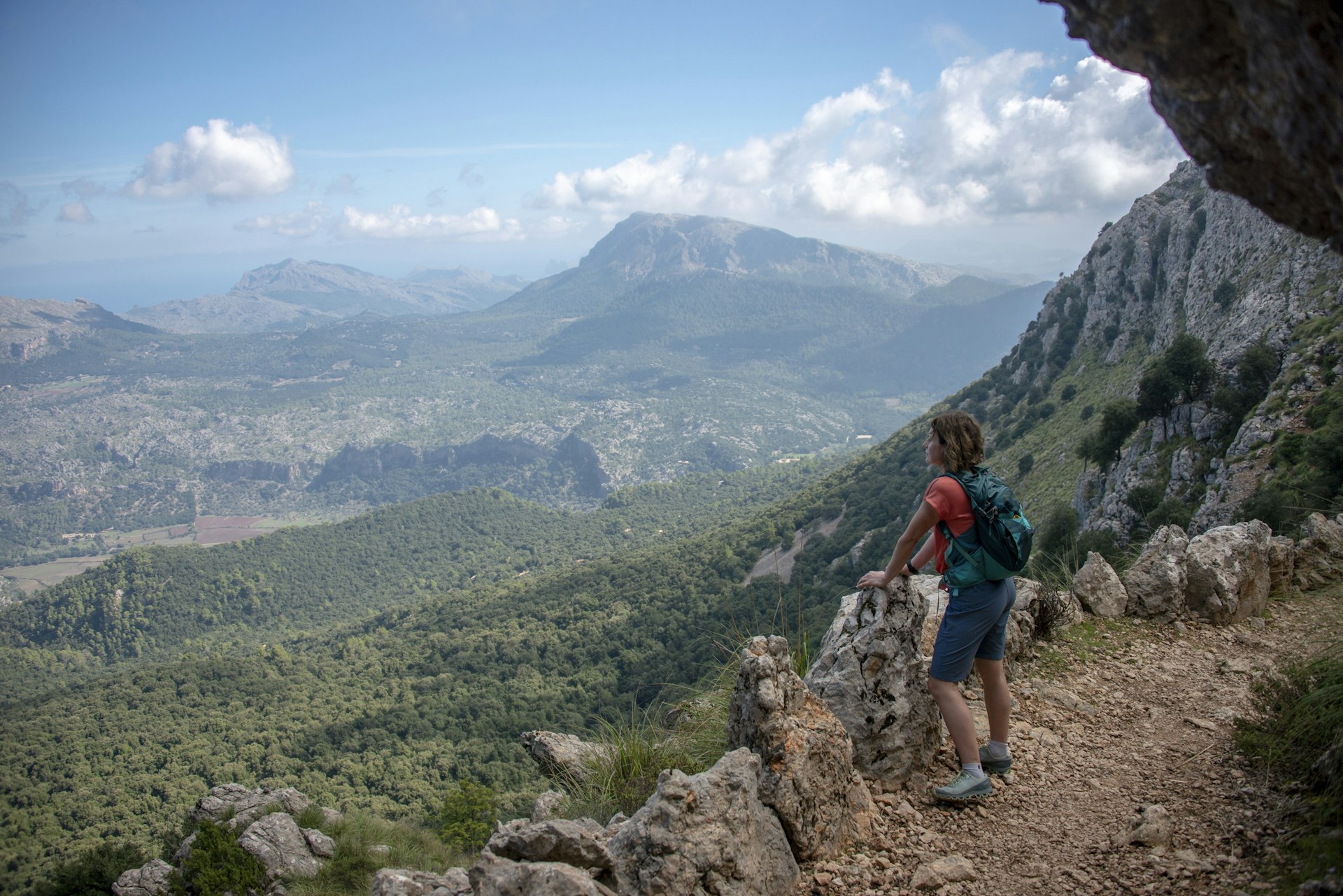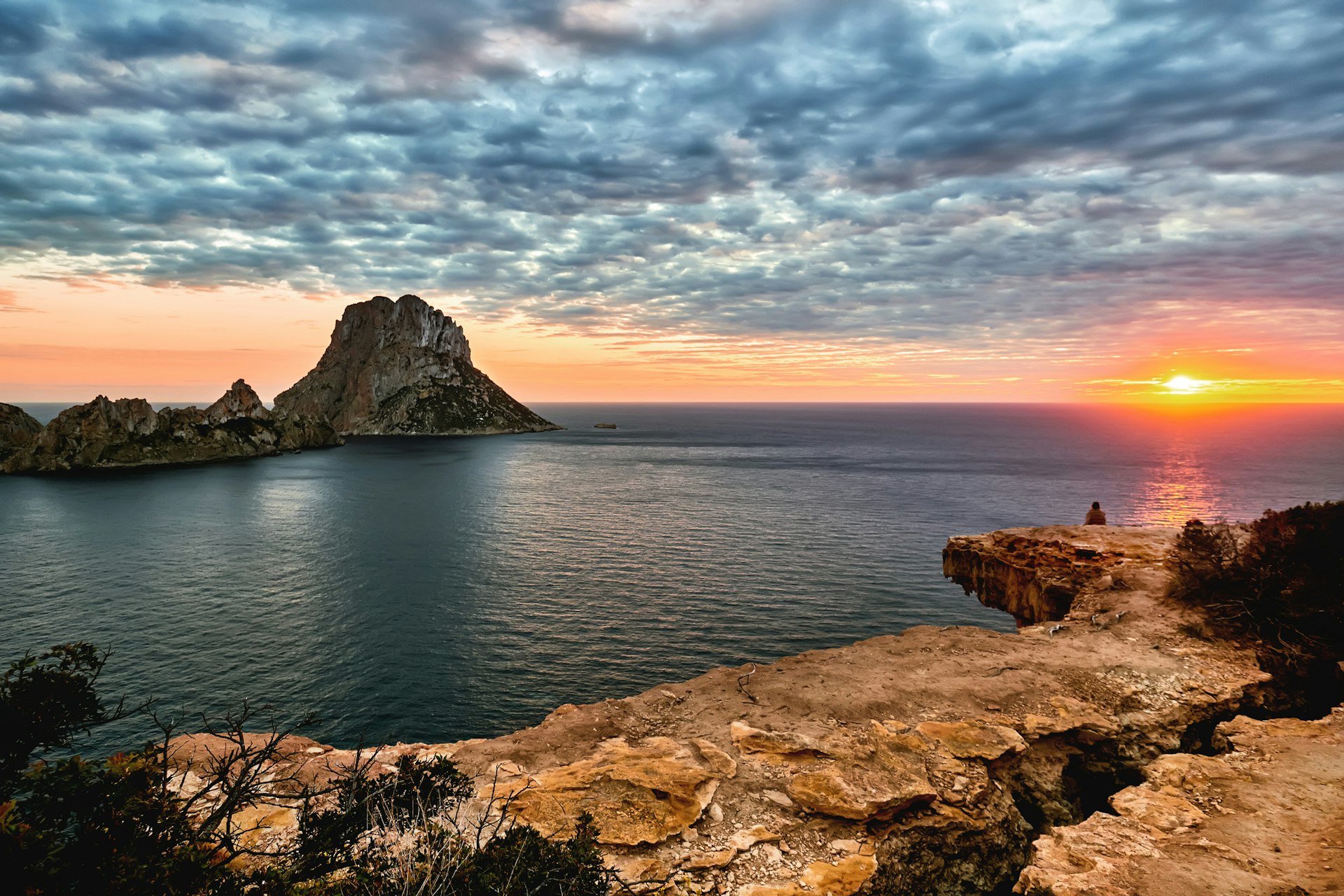Which of Spain‘s popular holiday escapes is right for you?
It’s not an easy choice: both islands are lapped by the clear waters of the Mediterranean and have gorgeous coastlines packed with white-sand beaches and tiny coves; both islands have captivating UNESCO sites to explore and strong food scenes with dishes just begging to be sampled.
To help you narrow down your options, we asked two travel writers to go head-to-head giving the case for the destination closest to their hearts.
Ibiza is so much more than sunsets and nightlife
Isabella Noble is a Barcelona- and Málaga-based travel journalist who has been drawn to Ibiza for years and often writes about the beautiful White Isle (beyond the parties).
Picture this: a fiery tangerine-pink sky sprawls above the outline of a few jagged islets, as the sun slowly drops into the shimmering Mediterranean. Welcome to magical, mesmerizing Ibiza, a naturally spectacular island that is about so much more than its world-renowned party scene – and where a soulful sunset is always on call.
Mallorca might be by far the largest of the Balearic Islands, but smaller Ibiza packs in a world of fun. It’s an island loved by global celebrities and style icons for years, but it’s also a place where wandering around barefoot with salty sea-fresh hair, where a flowy outfit with espardenyes (espadrilles) is a signature look. Ibiza basically invented boho-chic fashion, as you’ll see from its famous hippie markets and beach-cool boutiques.
While Mallorca has pretty Palma, Ibiza’s entrancing capital Eivissa (or Ibiza Town) is both an edgy, carefree beauty and an archaeological marvel founded by the Phoenicians back in the 7th century BCE. Encircled by spectacular 16th-century ramparts, it’s one of Spain’s oldest cities, now crammed with stylish shops, lively restaurants and curious galleries. Don’t miss the Museu d’Art Contemporani d’Eivissa, an ingeniously revamped 18th-century building that always has something wonderful on.
Speaking of restaurants, Ibiza’s food scene easily rivals Spain’s other culinary capitals; it just doesn’t shout about it. Here everything revolves around fresh Ibizan produce, much of it grown organically at fincas across the island. As a lifelong vegetarian, this local-rooted food culture is a dream, whether I’m having breakfast in the gorgeous gardens at Sant Joan’s Giri Cafe, devouring plant-based treats at Wild Beets in Santa Gertrudis or enjoying a leisurely lunch at a long-running local haunt like Ibiza Town’s Ca n’Alfredo. Mallorca isn’t the online grape-growing Balearic either – Ibiza’s divine wines are a treat too, mostly produced by small-scale family vineyards devoted to hyper-local grapes.

Then there are those deservedly world-famous beaches, in every shape and style under the Mediterranean sun. Fancy escaping to a crowd-free cliff-framed cala (cove)? Hike out to remote Es Portitxol or Cala d’Aubarca on the north coast. A sugar-white strand with a touch of partying? Head to pine-fringed Platja de Ses Salines, one of loveliest beaches in the entire country. Sunset drumming and bohemian beachy vibes? You want beautiful Benirràs. Somewhere for a glorious seafood lunch after a swim? Go for south-coast Cala d’Hort or Sa Caleta. Even on Ibiza’s most popular sands, you can still sidestep most of the crowds simply by visiting outside July and August.
The entire southeast corner of the island is a UNESCO-protected nature reserve, the Parc Natural de Ses Salines, which ripples around centuries-old salt flats (just another relic from Ibiza’s Phoenician past). Over on the party-loving west coast, it’s those sunsets that steal the show, especially around the beloved and enigmatic islet of Es Vedrà, still wrapped in mystery. And there are endless ways to soak up Ibiza’s serene landscapes, from paddleboarding, kayaking, hiking and cycling to yoga at some of Europe’s top retreats.
Heading inland, meanwhile, reveals a world of sun-drenched olive groves, whitewashed villages and ancient churches built like mini fortresses, especially across enchanting (and less-touristed) north Ibiza. I love staying at the many old farmhouses reborn as peaceful agroturismes here, whether that means a glamorous five-star retreat like Can Lluc or a more low-key bolthole like Can Fuster, a 150-year-old farmhouse in Sant Joan.
There’s also the allure of dreamy, barefoot-vibe Formentera, just a quick ferry ride away over the water and perfectly daytrippable from Ibiza. But I’d need a whole separate article for that.
So by all means come for the clubs, the parties and the dancing (Pacha is an icon of European nightlife that everyone should experience), but for me Ibiza’s magic is all about its slower side. Just pack a bocadillo (sandwich) and a swimsuit and hike out to a hidden cove – you’ll inevitably be blown away. There really is nowhere quite like it.

Mallorca has a beauty that’s hard to believe
Alexis Averbuck has explored and lived on islands the world over. She has the enviable job of researching Mallorca for the upcoming Lonely Planet guide.
For a relatively compact island, Mallorca is crammed with wonderful landscapes and plenty of varied things to do. Love wide open spaces and want unparalleled scenery? Head to the Tramuntana Mountains, so majestic and wonderful they are a UNESCO World Heritage Site. Narrow roads zigzag tip-to-tail with jaw-dropping sea views and hidden wonders like the mountaintop Santuari de Lluc, steeped in history as a pilgrimage site, and now both a spiritual center and hiking nirvana. Trek to teeny hermitages and pinnacle towers on well-marked mountain trails.
Or drop down into any of its gorgeous hamlets, from Banyalbufar, surrounded by Moorish terraces scoring its hills, to magnetic Valldemossa with its Carthusian monastery, once home to composer Frédéric Chopin and novelist George Sand. Ravishing Deià calls folks from far and wide, astride the hills alongside bustling Sollér, with its compelling central square and church, where you can take a steam train (from a station adorned with Picassos and Mirós) through the mountains to Palma, like the high-livers of yore.
Which leads me to Palma, a city that’s so beautiful it’s hard to believe it’s real. Wrapped in honey-colored medieval walls and crowned by its awesome cathedral with flying buttresses, gargoyles, the world’s largest rose window and Gaudí adornments, the city sits right alongside the giant, glittering blue sea. Step aside CGI, this is real-life Palma de Mallorca! And in among its grand castle-homes with ornate patios and courtyards throng banging cafes, bars and restaurants to suit any taste.
Oh, and let’s not forget Mallorca’s connection to the arts – with its superb modern art museums (Es Baluard and Museu Fundació Joan March) and cutting-edge galleries both in the old town and out. Any lover of human inspiration should visit the studios of Joan Miró where you can see this creative genius’s ateliers as he left them, drawings etched into the walls, paintbrushes in cans. Let his last work in progress as well as displays of his masterpieces lift you up, all with a sea view (he was no fool).

Wait, but with all this, I haven’t even mentioned the coastline… there are beaches, beaches and more beaches. From long white-sand spurs like Es Trenc to remote, protected bays like those in Parque Natural de la Península de Llevant – try calas Mitjana, Torta and Matzoc – or stunning, remote Cala Tuent. You can hike or boat to beaches inaccessible by car, so that even in high season you can discover a spit of sand or rock to call your own. And the waters are crystalline, aqua, cobalt – these are just some of the words you can use to describe them. There’s a range of water sports, including kite-surfing, kayaking and boating, or head inland to rock climb, hike and bike. There’s a reason the world’s best cyclists train here: if you’re going to spend 8 hours on a bike, let’s make them ravishing hours.
Mallorquín cuisine is a symphony of fresh produce and hearty cooking done with subtle flair. This is a productive island, growing all manner of its own food, from spring-flowering almonds and citrus (oranges, tangerines, grapefruit) to wheat and pork, plus fresh-caught seafood. It’s a veritable cornucopia! Enter the fray by shopping at myriad local markets, like the excellent Sineu market on Wednesday mornings – a tradition since 1306 – and Mercat de l’Olivar in Palma, or eat at a Mallorquín restaurant like Valldemossa’s Hostal Can Marió and its neighbor Es Taller. For those wanting to really splash out, there are Michelin-starred art-shows of local gastronomy at Adrian Quetglas, DINS Santi Taura and Marc Fosh.
Don’t miss the olive groves and mills where you can taste olive oil straight from the source. For wine, start with the rich DO Binissalem wines. Better yet, follow a wine tasting route through the rolling countryside between stone hamlets and in vineyards like Tianna Negre or La Finca Biniagual.
Lest you imagine Mallorca is pure sensual joy, also remember its extensive, fascinating history. Explore Bronze Age talayotic ruins like Es Turassot and Santuario de Son Corró around the Sencelles region, a sleepy and beautiful batch of hamlets in the interior. These ancient ruins are actually dotted across the whole island – I love the extensive Talaiots de Son Fornés and Ses Païsses. Get Roman at the Balearics’ most important site: Pollentia. The Banys Àrabs is a walk into the 11th-century Moorish era, or jump to the 14th century at the Castell de Bellver and the Palau Reial de l’Almudaina. Plus, there’s the incredible array of churches to explore – so many religious orders built here and seemed to spare no expense.
One final and very significant note: Mallorca has such a rich local life and large resident population, that it is active and inviting year-round, so you can easily come at a time outside of high season to avoid the crowds. Ibiza, on the other hand, is so reliant on summer tourism that vast swathes of its businesses simply close from late fall to spring and the old port becomes a ghost town. I’d choose the countless pleasures of Mallorca any day.
